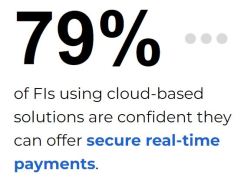69% of Consumers Prioritize Fraud Protection When Picking a Bank
Banks and financial institutions (FIs) face challenges in balancing the convenience of digital banking with the need for robust security measures. Economic impacts from fraud have forced these institutions to shift resources away from innovation toward immediate threat mitigation, hindering progress in the sector.
As security threats evolve, a PYMNTS Intelligence report, “Progress and Protection: Balancing Convenience and Security in Digital Banking,” in collaboration with NCR Voyix, illustrates how banks must find a way to outsmart fraudsters while meeting consumer demands for both innovative services and enhanced security.
Redirecting Resources
As the financial landscape undergoes digital transformation, the financial sector faces challenges — not least among them the rising costs of fraud. In a cycle that jeopardizes innovation, banks and financial institutions are often forced to divert resources from long-term strategic goals to immediate threat mitigation. This shift has implications for the industry, slowing progress in the very innovations that could enhance security and improve customer experience.
Fraud is evolving, putting banks on high alert. In 2023, the average fraud-related costs for FIs with assets exceeding $5 billion surged to $3.8 million, a massive 65% increase from the previous year. This rise is attributed to more sophisticated fraud tactics, with purchase return authorization fraud averaging $115,000 per incident. Notably, 47% of FIs reported dealing with account takeover fraud (ATO) in the past year, while phishing attacks continue to target 73% of banking customers, leading to further security breaches. As a result, 43% of FIs noted an uptick in fraud incidents, and most of these attempts stem from systemic deficiencies within their existing fraud technology stacks.
Innovation vs SecurityStriking a balance between innovation and security is crucial for banks and FIs. Consumer expectations are shifting, with 69% prioritizing fraud protection when selecting a financial institution. Furthermore, 32% consider this the most critical factor in their decision-making as the increasing demand for streamlined onboarding processes complicates the situation.
In fact, 24% of potential new account holders may be deterred if security measures are perceived as too cumbersome.
As digital banking becomes mainstream, so do security concerns. While 76% of consumers demand real-time service access, nearly half express skepticism regarding the security of artificial intelligence (AI)-enhanced banking technologies.
Ninety-one percent of consumers emphasize the importance of safeguarding their personal information, indicating that trust is as essential as technological innovation in retaining customers. Consequently, banks must navigate this complex landscape, balancing security needs with consumer expectations for seamless digital experiences.
Can Banks Keep Up?To combat security threats, banks and FIs must adopt proactive strategies, particularly as open banking presents new fraud risks. Consider 46% of institutions believe these risks outweigh the benefits, especially among those already grappling with high fraud levels. In response, many are leveraging advanced technologies like AI and machine learning to enhance security, with 79% of institutions using cloud solutions confident in offering secure real-time payments.
Additionally, 47% of consumers now use biometric authentication, and 60% believe it improves online security. To build resilience, banks should implement adaptive security measures, such as multifactor and biometric authentication, and prepare for future threats with post-quantum cryptography.
Collaborating with FinTechs can also spark innovation and agility, helping institutions meet the demands of a digital-first consumer base. As fraud tactics evolve, prioritizing security within digital strategies will be crucial for building trust and competitiveness in the market.
The post 69% of Consumers Prioritize Fraud Protection When Picking a Bank appeared first on PYMNTS.com.
